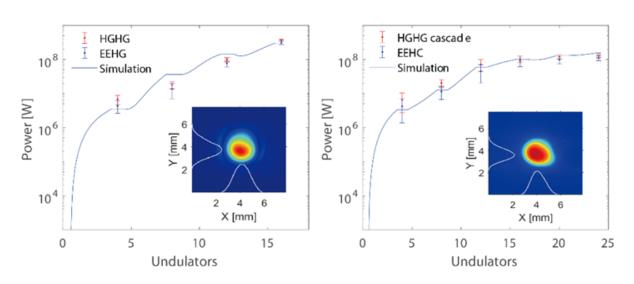Research Progress
An efficient way to generate ‘laser-like’ FEL is to employ an external laser source as the ‘seed’ to dominate the gain process and control the output properties. Current limitations on seeded FELs are the low harmonic up-conversion efficiency (limits the short wavelength coverage) and long output pulse duration (determined by the length of the external laser).
To overcome the above-mentioned limitations of seeded FELs, a research team from Shanghai Advanced Research Institute reported on the first demonstration of an external seeding mechanism, termed echo-enabled harmonic cascade (EEHC) for generating coherent and ultrashort soft x-ray pulses.
The results were published in Optica.
The EEHC mechanism uses echo-enabled harmonic generation as the first stage, producing intense extreme ultraviolet pulses that seed the second stage x-ray free-electron laser (FEL) with the high-gain harmonic generation setup. The mechanism shows that 100 MW-level peak power, transform-limited soft X-ray pulses with tunable pulse duration from 25 fs to 55 fs can be generated. Comparing with previous demonstrated seeded FEL mechanisms, EEHC holds the superiorities of much higher harmonic up-conversion efficiency and tunable pulse durations.
Besides the temporal coherence, researchers have also demonstrated a unique feature of EEHC on generating isolated ultrashort pulses. The supreme up-frequency conversion efficiency and flexible pulse length control of this EEHC mechanism allows to exceed the current limitations of seeded FELs while preserving the coherence of the seed.
These features of EEHC are a step towards fully coherent and ultrashort x-ray lasers and could unlock the door for extending nonlinear optical techniques to the sub-nanometer wavelength and few-femtosecond time duration range.

Fig. 1 FEL gain curves for the first- (left) and second-stages (Image by SARI)





